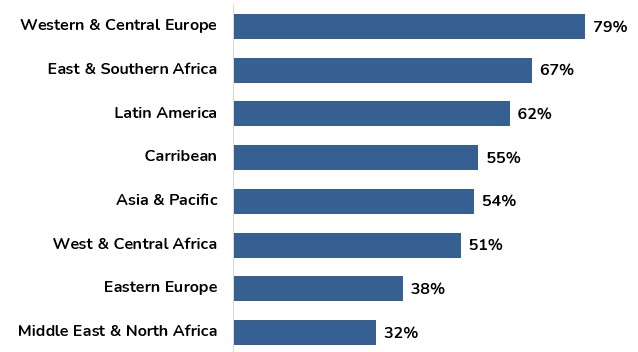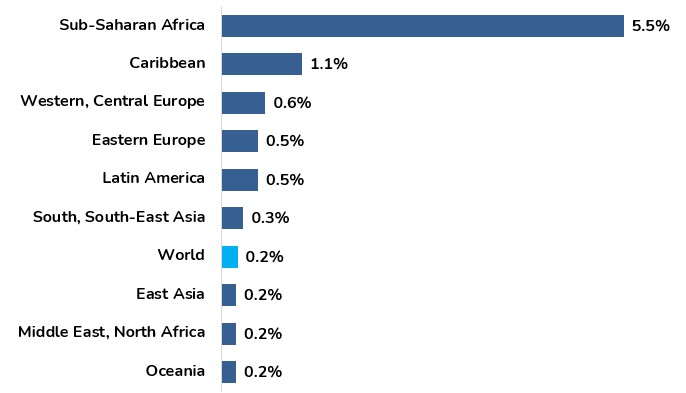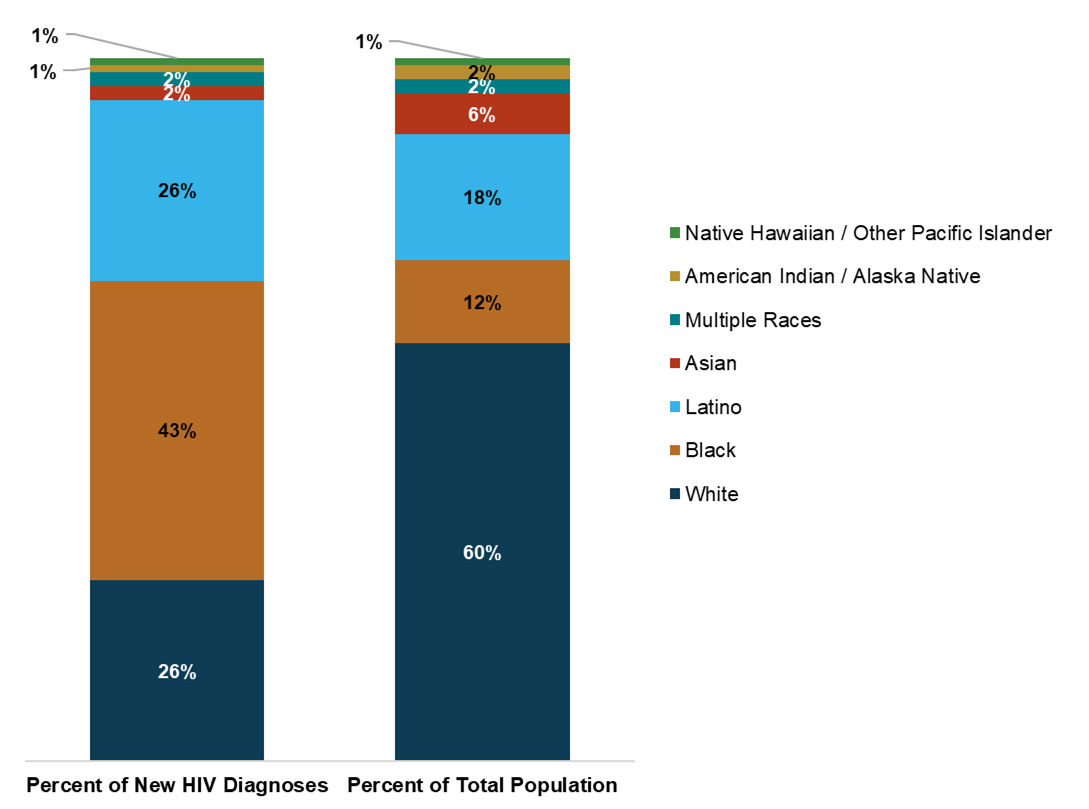Employers have long known that HIV/AIDS is a major public health issue that heavily impacts people in their most productive employment years. Fortunately, HIV/AIDS no longer has to be a death sentence, as 73% of adults and 54% of children with HIV are receiving lifelong antiretroviral therapies (ART) (Figure 1).1 However, more work needs to be done to ensure that everyone has access to effective treatments.


The numbers tell the story:
- 38 million people are living with HIV globally (Figure 2);
- Due to gaps in HIV services, 680,000 people died from HIV-related causes in 2020 and 1.5 million people were newly infected; and
- The vast majority of those newly infected are in their prime working years (15 – 49 years old).1
Significant progress has been made in how HIV/AIDS is managed. Since 2010, new HIV infection rates and HIV-related death rates have dropped 31% and 47% respectively.3 Unfortunately, some world regions have seen increases in new HIV infections (Central Asia and Eastern Europe – 43% and Middle East and North Africa – 7%) and Central Asia and Eastern Europe is the only world region to see a 32% increase in HIV-related deaths over the past decade.2
Health Equity
As awareness of diversity, equity and inclusion (DEI) grows, it is important to recognize that HIV/AIDS impacts minority groups more severely (see Figure 3), as they may not have equitable access to treatment options.4 While the virus affects all sexual orientations, it has a deep impact on the LGBTQ+ population.3,5
In many countries around the world, there are barriers to having HIV/AIDS covered under medical insurance.6,7 This in turn impacts people’s ability to gain access to treatment and stigmatizes getting tested in the first place.6
What Employers Can Do
HIV/AIDS continues to be a workforce priority for employers. They can do the following to not only promote health and well-being in their workforce, but also to be an influencer in the area of HIV/AIDS:

- Promote a global consistency strategy and address access gaps by reviewing your local country health plans to determine if HIV/AIDS coverage is included and if coverage is legally possible. Where gaps exist, employers can work with local country insurers or utilize other purchasing mechanisms (e.g., captive) to add HIV/AIDS coverage to their medical plans where legally viable.
- Promote testing as part of preventive care.
- Reinforce the importance of routine care for those with HIV as part of chronic disease management, including talking with their doctor about pre-exposure prophylaxis (PrEP), a once- a-day pill that in concert with safer sex practices greatly reduces the transmission of HIV.
- Work with your company’s DEI team and employee resource groups (ERGs) to address health equity issues and specific communication needs.
- Reiterate the risk of delaying care, as the pandemic has caused some people to delay both preventive and routine care, which can have dire consequences.
Resources
References
- 1 | HIV/AIDS fact sheet. World Health Organization. July 2021. https://www.who.int/news-room/fact-sheets/detail/hiv-aids. Accessed November 10, 2021.
- 2 | Challacombe SJ. Global inequalities in HIV infection. Oral Diseases. September 2020;26(Suppl. 1):16–21. https://onlinelibrary.wiley.com/doi/epdf/10.1111/odi.13386. Accessed November 11, 2021.
- 3 | Confronting inequalities: Lessons for pandemic responses from 40 years of AIDS. UNAIDS. July 2021. https://www.unaids.org/en/resources/documents/2021/2021-global-aids-update. Accessed November 12, 2021
- 4 | HIV/AIDS and African Americans: The basics. Kaiser Family Foundation. February 2020. https://www.kff.org/hivaids/fact-sheet/black-americans-and-hivaids-the-basics/. Accessed November 1, 2021.
- 5 | How HIV impacts LGBTQ people. Human Rights Campaign. February 2017. https://www.hrc.org/resources/hrc-issue-brief-hiv-aids-and-the-lgbt-community. Accessed November 3, 2021.
- 6 | Ooms G, Kruja K. The integration of the global HIV/AIDS response into universal health coverage: desirable, perhaps possible, but far from easy. Globalization and Health. June 2019; 15:14. https://globalizationandhealth.biomedcentral.com/articles/10.1186/s12992-019-0487-5. Accessed November 15, 2021.
- 7 | A study on medical insurance coverage for people living with HIV in selected multinational insurance companies in Malaysia. International Labour Organization (ILO). May 2021. https://www.ilo.org/global/topics/hiv-aids/publications/WCMS_789866/lang--en/index.htm. Accessed November 15, 2021.
